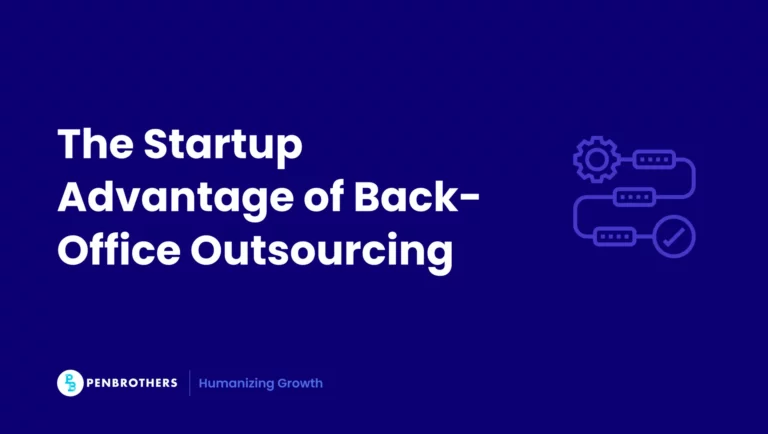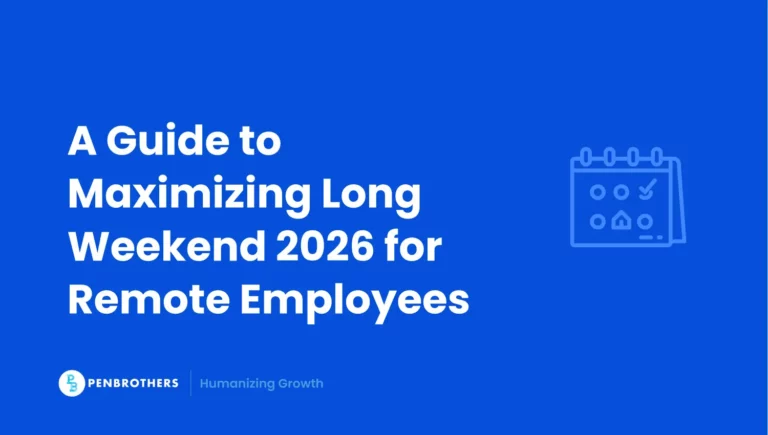You’ve just hired your first U.S.-based team member. Exciting milestone. But now you’re staring at a spreadsheet with rows of taxes and acronyms you’ve never seen. Payroll tax isn’t optional. It’s a critical part of hiring compliantly in the United States.
This article walks you through what payroll tax really means, how much it can cost, and how global employers can manage it better. Whether you’re hiring directly, through an Employer of Record (EOR), or building an Offshore Development Center (ODC), this is your practical guide.
What Is a Payroll Tax?
Payroll tax is a mandatory contribution based on an employee’s wages. Some taxes are withheld from the employee’s paycheck. Others are paid by the employer. In many cases, the burden is split.
These taxes fund critical social programs. At the federal level, they pay for Medicare and Social Security. States and municipalities may also use them to fund unemployment insurance, disability programs, and public infrastructure.
According to the IRS 2024 Publication 15 (Circular E), payroll taxes fall under federal employment tax obligations and include FICA (Social Security and Medicare), FUTA, and income tax withholding, all of which require accurate, timely filings to avoid penalties.
The Two Sides of Payroll Tax
- Employee Withholding: These are deducted directly from an employee’s paycheck (e.g., Social Security, Medicare, federal income tax).
- Employer Contributions: These are taxes the employer pays on top of gross wages (e.g., FUTA, SUTA, employer’s share of FICA).
Understanding this breakdown is crucial. It affects your labor cost estimates, pricing models, and operational compliance.
Types of Payroll Taxes in the U.S.
In the U.S., payroll taxes refer to a set of mandatory contributions tied to an employee’s wages. These taxes may be paid by the employer, withheld from the employee, or split between both. Here’s a breakdown of the most common payroll tax types that apply to U.S. employment:
- Social Security Tax
- Paid by both employer and employee.
- Supports retirement and disability benefits.
- Medicare Tax
- Paid by both employer and employee.
- Funds health coverage for seniors and qualifying individuals.
- Additional tax applies to high-income earners.
- Federal Unemployment Tax (FUTA)
- Paid by the employer only.
- Funds federal unemployment insurance programs.
- Reduced rate available if state unemployment taxes are paid on time.
- State Unemployment Tax (SUTA)
- Typically paid by the employer.
- Rates and wage bases vary by state.
- Funds state-level unemployment benefits.
- Income Tax Withholding
- Withheld entirely from employee wages.
- Employers handle calculations, remittance, and reporting to federal and state agencies.
- Workers’ Compensation Insurance
- Required in most states.
- Covers medical expenses and wage replacement for workplace injuries.
- Costs vary by industry and risk class.
- Disability Insurance
- Mandatory in certain states (e.g., California, New York).
- May be funded by employer, employee, or both.
- Local Payroll Taxes
- Levied in specific cities or municipalities (e.g., San Francisco, New York City).
- Vary in rate and applicability depending on location and employee headcount.
Payroll taxes are not one-size-fits-all. They differ by jurisdiction, employment type, and company structure, making it critical for international employers to stay updated on current obligations.
How Payroll Taxes Are Calculated and Paid
Calculating payroll taxes isn’t just about running numbers, it’s about meeting federal, state, and sometimes local compliance standards without fail. Employers are responsible for both accurate calculations and timely payments.
To start, businesses must collect and maintain key documents:
- Form W-4: Completed by employees to determine the correct amount of federal income tax to withhold from each paycheck.
- Form W-2: Issued annually by the employer, it summarizes each employee’s total compensation and the taxes withheld.
- Pay Stubs: Required in many states, these show detailed breakdowns of gross pay, deductions, and employer contributions.
Beyond documentation, employers must apply the correct tax rates and thresholds for each employee. This includes calculating:
- Withholding for federal income tax
- Employee and employer shares of Social Security and Medicare
- State and local tax obligations (if applicable)
- Unemployment insurance contributions (FUTA and SUTA)
Most taxes must be reported and paid either monthly or semi-weekly, depending on your total payroll size and deposit schedule. Additionally, quarterly and annual filings are required, including:
- IRS Form 941 (quarterly payroll tax returns)
- IRS Form 940 (annual FUTA tax return)
- State-specific unemployment and withholding reports
Errors in payroll tax calculations, or late deposits, can result in fines, interest charges, or IRS audits. The cost of non-compliance adds up quickly.
While manual processing is possible, it’s highly risky at scale. Many international companies use payroll platforms or Employer of Record (EOR) services to manage U.S. compliance. Many companies turn to global payroll providers or EOR platforms to ensure every deduction, report, and payment is handled accurately especially when managing compliance across jurisdictions. See how payroll works in the Philippines if you’re also managing offshore operations.
What Employers Actually Pay
Hiring a W-2 employee in the U.S. isn’t just about offering a salary. It comes with a layer of mandatory payroll taxes and employer-specific contributions that directly impact your total cost per hire. These obligations are non-negotiable and they add up fast.
As an employer, you’re directly responsible for the following payroll taxes and related contributions:
- 6.2% Social Security Tax
- This funds federal retirement and disability programs.
- It’s your share of the 12.4% Social Security tax under FICA (the other half is withheld from the employee).
- 1.45% Medicare Tax
- This funds health insurance for individuals 65 and older.
- Like Social Security, this is your portion of the 2.9% total Medicare tax.
- For employees earning over $200,000, you’re required to withhold an additional 0.9%, though you don’t pay this extra amount yourself.
- Federal Unemployment Tax (FUTA)
- Standard rate is 6% on the first $7,000 of each employee’s annual wages.
- If you also pay into a state unemployment system on time, this can be reduced to as low as 0.6%.
- State Unemployment Tax (SUTA)
- Paid by the employer in most states.
- Rates vary from under 1% to over 6%, based on state rules and your unemployment claims history.
- Some states apply a higher tax rate for new employers with no prior experience rating.
- Workers’ Compensation Insurance
- Mandatory in nearly all states.
- Premiums depend on the nature of the employee’s role and your claims history.
- High-risk industries (e.g., construction or warehousing) typically face higher rates.
- Other Statutory Contributions (where applicable)
- Disability insurance in states like California, New York, and New Jersey
- Paid family leave programs in select jurisdictions
- Local payroll taxes, especially in cities like San Francisco and New York
Combined, these payroll-related costs typically add an extra 7% to 10% on top of the employee’s base salary. So if you’re paying a U.S. employee $100,000 per year, you should budget an additional $7,000 to $10,000 to cover your employer-side obligations before even factoring in benefits or bonuses. The Bureau of Labor Statistics reports that employers spend an average of $12.38/hour on benefits, including payroll taxes.
Unlike income tax withholding, which passes through the employer to the government, these are true expenses that come out of your company’s pocket. They should be reflected in your total cost of employment model.
Optional Deductions and Offsets
While not payroll taxes per se, employers may also process deductions and credits that affect tax exposure:
- Deductions from Wages
- Employers may deduct costs such as uniforms, tools, or missed shifts, so long as these deductions do not reduce pay below federal or state minimum wage.
- Available Tax Credits
- Programs like the Work Opportunity Tax Credit (WOTC) or small business health care tax credits may help offset your tax burden if eligibility criteria are met.
- Some nonprofit employers may be partially exempt from certain contributions, while other businesses may qualify for credits based on hiring veterans, long-term unemployed individuals, or other target groups.
| Tax Type | Who Pays | What It Funds | Notes |
| Payroll Tax | Employer & Employee | Social programs (e.g., Medicare, SS) | Based on wages; some split, some not |
| Income Tax | Employee | General government budget | Withheld by employer |
| Payroll Withholding | Employee | All of the above | Method of collection, not a separate tax |
Contractor vs. Employee: Who Pays What?
Misclassifying contractors can cost you. Employees are subject to payroll taxes. Contractors are not but that doesn’t make them “free.”
Contractors pay their own self-employment tax (15.3%), while employers don’t contribute. But misclassifying an employee as a contractor can trigger IRS audits and back payments.
The IRS uses a three-prong test (behavioral, financial, and relationship control) to determine worker classification. More on this can be found in IRS guidelines on independent contractors. Learn more about the key differences in our guide to independent contractor vs. employee.
For global companies, working with compliance advisors or international payroll platforms can help navigate classification rules especially in cross-border hiring scenarios where IRS and local laws can conflict.
Tips to Minimize Payroll Tax Burden (Legally)
Managing payroll tax obligations is more than just writing checks. With the right approach, you can reduce your financial exposure without cutting corners. Here are several proactive strategies employers, especially those expanding into the U.S., can use to stay compliant and cost-efficient:
1. File Returns and Make Deposits on Time
Late payroll tax filings can trigger automatic penalties and interest charges from the IRS or state tax agencies.
- Use calendar alerts or automated payroll software to ensure you meet filing deadlines.
- Most federal tax deposits are due semi-weekly or monthly, depending on your total payroll liability.
- Quarterly filings (e.g., IRS Form 941) and annual reports (e.g., Form W-2, W-3, 940) must be submitted punctually to avoid fines.
2. Maximize Eligible Tax Credits
Several federal and state programs offer credits that reduce your overall tax liability.
- The Work Opportunity Tax Credit (WOTC) is a key federal incentive for hiring individuals from target groups, such as veterans or long-term unemployed workers. Properly outsourcing accounting services can also support accurate reporting and optimize financial strategy.
- Depending on your state, you may also qualify for training grants, small business credits, or industry-specific subsidies.
3. Offer Pre-Tax Benefits like Retirement and Health Plans
Contributions to certain employee benefit programs can lower both taxable income and payroll tax exposure.
- Offering a 401(k) retirement plan allows employees to defer part of their wages, reducing the employer’s immediate payroll tax obligation.
- Providing health insurance through a Section 125 cafeteria plan can also reduce FICA liability, since premiums are paid pre-tax.
4. Track All Deductible Business Expenses
Certain expenses related to employee compensation and operations may be tax-deductible.
- Keep records of reimbursable costs such as uniforms, work equipment, training, and travel.
- Accurate documentation not only ensures proper tax treatment, it also protects against audit risk.
5. Maintain Detailed Payroll and HR Records
Detailed, well-organized payroll data is critical for managing tax compliance and defending against audits.
- Store records of hours worked, wages paid, withholdings, benefits, and any deductions.
- Maintain up-to-date employee classification and status (e.g., full-time, part-time, exempt, non-exempt).
Final Thoughts
Understanding U.S. payroll tax is critical especially if you’re managing or expanding a globally distributed team. It’s not just a line item in a budget. It’s a legal obligation that can either protect your business or expose it to costly risks.
Hiring in the U.S. without a clear grasp of payroll tax obligations can result in unexpected liabilities, penalties, or compliance gaps. But when approached strategically and with the right partners, it becomes a foundation for scalable, sustainable growth. For global teams, understanding how to pay offshore teams is equally critical.
International companies that hire in the U.S. often maintain offshore teams in parallel for reasons of cost efficiency, global coverage, and operational flexibility. While we don’t hire talent in the U.S., we support companies in scaling their offshore workforce in the Philippines, helping them build teams that are compliant, cost-effective, and aligned with global hiring strategy. Learn how it works and what to expect from our offshoring model.
Ready to scale your offshore team with confidence? Let’s talk.






